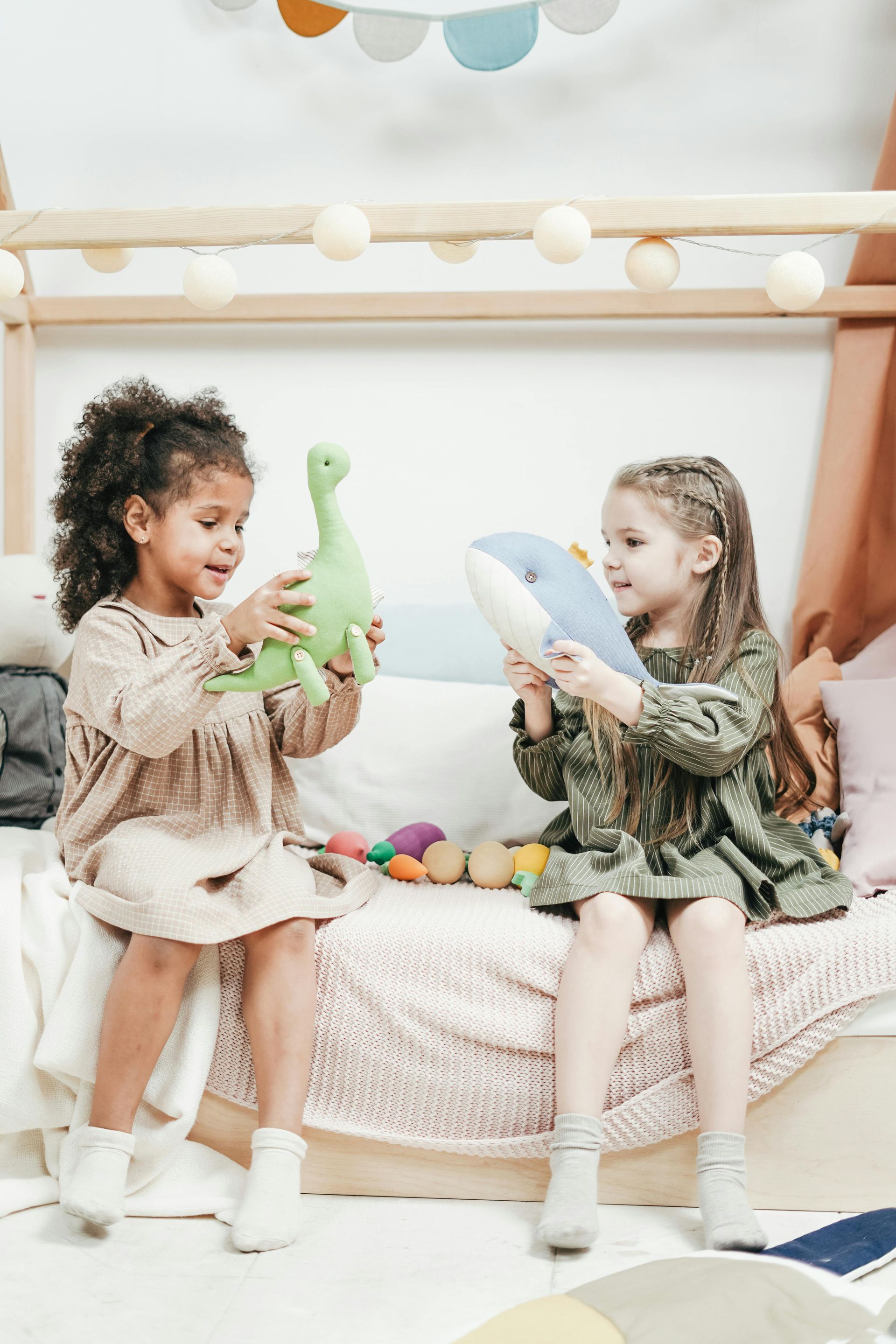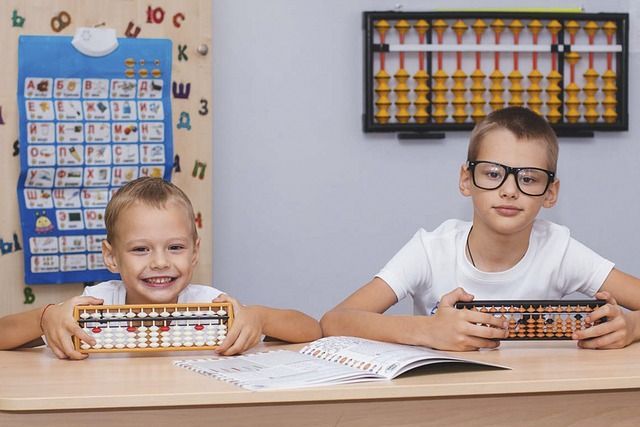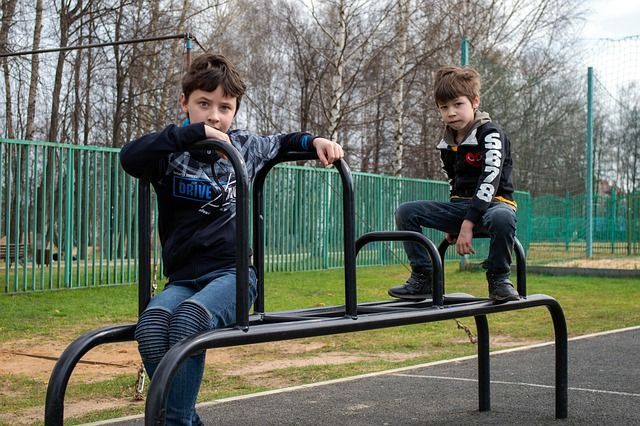How Teachers Can Help Kids Overcome Friendship Struggles
What do you do when a student comes to you in tears because their best friend will not talk to them? Moments like this show how important your role is. Friendship problems can make kids feel lonely, worried, or unsure of themselves.
This guide gives you simple, step-by-step ways to help. You will learn how to teach social skills, calm conflicts, and build a classroom where every child feels safe, welcome, and part of the team. Together, you can help students grow strong, healthy friendships that last.
Teacher's Guide to Friendships Step 1: Create a Classroom Culture That Values Kindness and Inclusion
Friendships grow best in a classroom that feels safe, calm, and kind. Kids watch everything you do. When they see respect, patience, and warmth, they copy it. When they feel welcome, they reach out to others. This is how strong friendships start.
Morning meetings help build this feeling from the first day. Keep the activities simple. Let students greet each other, share news, or talk about something good that happened. Point out acts of kindness when they happen. Kids learn fast when you show them what you want more of.
Here are some ways to make your classroom inclusive:
•
Clear expectations: Post rules about respect and kindness. Go over them each week so students remember.
•
Assigned partners: Change partners and groups often so kids work with many classmates.
•
Recognition systems: Give quick shout-outs or small rewards when you see kindness.
•
No exclusion: Make a rule that everyone gets to play. “You can’t play” is not okay in your room.
•
Celebrate differences: Read books and have talks that show many cultures, families, and backgrounds.
Plan team-building games at least once a month. These simple activities help kids connect with classmates they might not talk to on their own. A child who feels shy on Monday might laugh with a new friend during a group challenge on Friday.
When kindness is part of daily life, friendships form more easily. Kids feel safe. They feel seen. And they feel ready to open their hearts to others.
Teacher's Guide to Friendships Step 2: Teach Specific Friendship Skills Through Direct Instruction
Many children struggle with friends because they do not yet know the skills they need. Kids do not learn these skills on their own. Without help, some students fall behind and feel lost.
Set aside time each week to teach social skills directly. Use simple role-play. Let students practice saying hello, joining a game, or asking someone to play. Break each skill into small, easy steps so kids can remember what to do.
Show students how to act in common friendship moments. Model good listening by looking at the speaker, nodding, and asking simple follow-up questions. Show how to give a kind compliment and how to accept one with grace.
Make anchor charts with helpful tools such as conversation starters, problem-solving words, and ways to include others. Keep the language short and child-friendly so students can use these tools without help.
Add empathy lessons too. Use short stories or simple classroom situations. Ask students how a character might feel and why. Talk about how different people may see the same moment in different ways. This helps students understand classmates better when real conflicts appear.
Teacher's Guide to Friendships Step 3: Recognize Early Warning Signs of Friendship Trouble
When you catch problems early, you can stop small issues from growing into big conflicts. Early action protects kids’ confidence and friendships.
Watch for these signs during class and transitions:
- Sudden isolation: A student who used to have friends now sits alone. This may mean they were left out or had a fight.
- Changed behavior: A child becomes quiet, sad, or withdrawn. This could point to conflict or even bullying.
- Frequent tattling: Many reports about the same peer can be a sign of ongoing tension.
- Cliques forming: Small groups begin shutting others out. This shows a social pecking order is forming.
- Physical complaints: More nurse visits or stomachaches before social times may mean the child feels anxious about peers.
Watch closely during recess, lunch, and line-up times. These moments show the real friendship patterns. Take short notes so you can spot repeating issues and talk with students using real examples.
Check in with students who show warning signs. Ask gentle, open-ended questions about friends. A short talk can help you understand the problem and shows the child you care about how they feel.
Teacher's Guide to Friendships Step 4: Facilitate Peer Conflict Resolution Sessions
When students have a conflict, help them talk it out step-by-step. Do not solve the problem for them. When kids learn to fix problems on their own, they become stronger and more confident.
Bring the students to a calm, quiet place. Make sure everyone is ready to talk. Set clear rules first: no interrupting, no name-calling, and everyone must try to solve the problem together.
Ask each student to share their feelings using simple “I statements.” Give them easy starters like, “I felt hurt when…” or “I was upset because…” This helps students speak from the heart instead of blaming others. It also makes it easier for both kids to listen.
Move through the talk in small steps:
•
Understanding: Each child repeats what the other said to show they heard it correctly.
•
Accountability: Each child says what they did that added to the problem.
•
Brainstorming: Both kids share ideas to fix the issue.
•
Agreement: They pick one fair solution and say what they will do next.
•
Follow-up: Meet the next day to see if things are better.
Write down the plan so everyone remembers what they agreed to.
During the session, stay calm and supportive. Act like a coach, not a judge. Your goal is to teach students how to solve their own friendship problems with less adult help over time.
Younger students may need simple scripts. Older students can handle longer talks once they practice these steps.
Teacher's Guide to Friendships Step 5: Address Exclusion and Clique Behavior Proactively
Exclusion hurts. It can make a child feel alone, sad, and unsure of themselves. It can also create a classroom that feels tense and unfair. When you see cliques forming or kids leaving others out on purpose, step in right away.
Start with a private talk. Speak gently with the students who are excluding others. Explain how their actions make classmates feel. Do this without shaming them. Many kids do not understand how painful rejection is until someone helps them see the impact. Keep the focus on your classroom values and the kind of community everyone deserves.
Use activities that mix students up. Try random partners for projects or new seating groups. At first, kids may resist. But over time, these small changes help them meet new classmates and practice flexible social skills.
Give isolated students chances to shine. Point out their strengths, hobbies, and talents in front of the class. When peers see them in a positive way, they often become more open to including them. Pair students who struggle socially with kind role models who can show what friendly behavior looks like.
If exclusion becomes a pattern, talk to the whole class. Read books about belonging and discuss how characters feel. Ask students what they can do to make sure everyone is welcome. Make it clear that exclusion breaks class rules and has consequences.
For ongoing problems, try tools like a buddy bench or an inclusion program. You can also choose “inclusion helpers”—students who look for classmates who may need a friend or a partner.
Teacher's Guide to Friendships Step 6: Communicate Effectively With Parents About Social Issues
Parents need to know when their child is facing friendship challenges, but these talks must feel caring and respectful. Your goal is to work together, not to blame anyone.
Reach out early when you see signs of trouble. Do not wait for the problem to grow. Share what you have seen in a calm, factual way. Focus on the behavior, not the child. This helps parents stay open and not feel judged.
A simple structure works well:
- Start with something positive. Share a strength or a happy moment you’ve noticed. This helps parents relax.
- Describe the concern clearly. Give the exact behavior, time, or situation you saw. Use details instead of labels.
- Explain what you have tried. Tell the parent how you handled the situation in class so they know you are already supporting their child.
Ask parents what they have seen at home. Kids often share friendship worries with their families. Parents may know things that help you understand the whole picture. Work together to find a plan that is consistent in both places.
For serious issues like bullying or ongoing exclusion, write everything down and follow school rules. Keep parents updated so they know what is happening. Regular communication builds trust and shows that you care about their child’s social growth.
When talking to parents of students who are struggling socially, stay warm and supportive. Avoid blaming language. Let parents know you want to help their child grow healthier social skills. Most families want the same.
Teacher's Guide to Friendships Step 7: Build Individual Student Confidence and Social Skills
Some children struggle with friends because they feel shy, worried, or unsure of what to do. Others had hard experiences before, and this makes friendship feel scary. These students need gentle, steady support from you.
Meet with these students one-on-one. Talk about what they are good at. Help them notice their strengths, hobbies, and kind actions. Many kids forget what makes them special when they feel left out.
Teach simple ways to join others. Practice how to say, “Can I play?” or “Can I sit here?” Role-play these moments so the child can try different words and actions. Practice times when joining works and times when it does not. This helps kids stay brave even when things don’t go their way.
Here are some ways to build confidence:
•
Give special jobs: Let the student help with class tasks so others see their strengths.
•
Create small groups: Plan easy lunch groups or simple activities with friendly peers.
•
Celebrate wins: Praise even small steps, like saying hello or trying something new.
•
Talk about rejection: Explain that not every friend match works, and that trying again is okay.
•
Find “safe peers”: Pair the child with classmates who are kind and patient.
Work with the school counselor if the child has big worries or very low confidence. Some students grow best in small social-skills groups with extra support.
Watch progress over time. Friendship skills do not grow in one day. There will be ups and downs. With your steady help, students become braver, kinder, and more ready to make friends.
Teacher's Guide to Friendships Step 8: Handle Bullying Situations With Immediate Action
Bullying is not the same as a normal conflict. Bullying happens again and again, on purpose, and one child has more power than the other. When you see this pattern, act right away.
Take every report seriously. Even small actions can feel very big and very painful to the child being targeted. Listen to each student one at a time so you can hear the facts clearly.
Follow your school’s rules for consequences. But remember, consequences alone do not fix bullying. Students who bully need help learning empathy, managing anger, and finding better ways to feel important.
Support the child who is being targeted:
•
Keep them safe. Separate them from the student who is bullying during recess, lunch, or other free times.
•
Check in daily. Ask how things are going so they know they are not alone.
•
Teach strong words. Practice simple scripts like, “Stop. I don’t like that.”
•
Build a support team. Connect them with kind peers who can sit with them, play with them, and help them feel safe.
Think about schedule changes or extra adult supervision if needed. Small adjustments can make a big difference.
Write down every incident. Include dates, who was involved, and what actions you took. Clear records help if the problem grows or if parents ask for information. Share what you need to with administrators and follow all district rules for reporting.
Work with the parents of both students. Keep details private as needed, but make sure everyone understands the situation is serious. Some parents may deny the problem or blame others. Stay calm, stay firm, and stay focused on student safety and solutions.
Teacher's Guide to Friendships Step 9: Incorporate Social-Emotional Learning Into Daily Routines
Friendship skills should not feel separate from the rest of the school day. You can build social-emotional learning into everyday moments.
Start each morning with a quick feelings check-in. Students can share how they feel using simple emotion words or a picture scale. This helps kids see that talking about feelings is normal. It also helps you notice early signs of stress before small problems grow.
Use books in all subjects to explore friendship. Talk about how characters treat each other, what they want, and how they solve problems. Ask students what they think a character could do differently. These easy talks help kids think about feelings and choices.
Plan group work where students truly need one another. When kids must work together to finish a task, they learn teamwork, patience, and respect. Give each child a clear job so everyone feels important to the group.
Teach simple calming tools students can use during tough moments. Try deep breathing, counting to ten, squeezing a stress ball, or taking a short break. Practice these skills when things are calm so students can use them during real conflicts.
End the week with a short reflection. Ask students to name one thing they did well in friendships and one thing they want to get better at. This helps kids take charge of their own social growth and notice their progress.
Teacher's Guide to Friendships Step 10: Know When to Involve Additional Support
Some friendship problems are too big for one teacher to solve alone. That is normal. Some students need extra help from a school counselor or psychologist.
Watch for signs that a child may need more support. If a student keeps struggling even after you try many strategies, it may be time to ask for help. If a child seems very sad, very worried, or very angry, they may also need more care.
A student may need extra support if:
• They avoid other kids all the time
• They act in aggressive ways that do not improve
• They have trouble with friends because of learning or communication needs
• They seem depressed or shut down
• A group keeps having the same conflict over and over
• Family stress is hurting the child’s friendships
When you ask for help, stay part of the team. Share what you see in class. Follow any plans the counselor gives you. Kids grow faster when all adults work together.
Some families may need help outside of school too. Be gentle when you mention this. Families should feel supported, not judged.
Keep standing up for students who need more care. Your notes and observations make a big difference. And your steady support helps the child feel safe while specialists work on deeper needs.
Conclusion
Helping kids with friendship problems can feel hard, especially when you already have so much to do. But you do not need big or perfect answers. Real progress comes from small steps you take each day.
When you listen to your students, talk with them, and guide them gently, you make a huge impact. Little moments—like checking in, giving a kind word, or helping two students talk—add up over time.
Celebrate every small win. A brave hello. A new partner. A kinder choice. These moments show your work is paying off.
Trust the process. You are helping your students grow as friends and as people. Because of your care, your classroom becomes a place where every child can feel safe, connected, and ready to learn.
Want a fun way to help kids develop confidence and feel good about themselves? Check out my popular assembly program SMILE! It's Magic! This program is filled with great character-building lessons, magic, interactive fun, and plenty more.
SHARE POST



